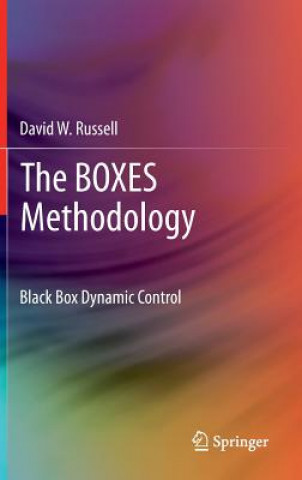
Kód: 01434464
BOXES Methodology
Autor David W. Russell
Robust control mechanisms customarily require knowledge of the system s describing equations which may be of the high order differential type. In order to produce these equations, mathematical models can often be derived and corre ... celý popis
- Jazyk:
 Angličtina
Angličtina - Väzba: Pevná
- Počet strán: 226
Nakladateľ: Springer London Ltd, 2012
- Viac informácií o knihe

Mohlo by sa vám tiež páčiť
-

Richard Patterson
42.44 € -17 % -
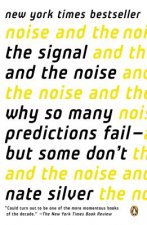
Signal and the Noise
17.79 € -16 % -
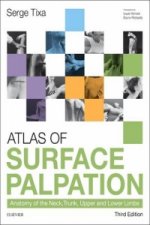
Atlas of Surface Palpation
82.84 € -

Higurashi When They Cry: Abducted by Demons Arc, Vol. 2
10.73 € -25 % -

Princess Polly's Potty
7.97 € -22 % -

Integration of Metabolism, Energetics, and Signal Transduction
122.83 € -

Fashion House 4 Mini Notebooks
8.38 € -18 % -

In Focus: Bugs
14.21 € -5 % -

No Hero
17.68 € -18 % -

Shadow of the Titanic
11.45 € -28 % -

Digital Phase Locked Loop based Signal and Symbol Recovery System for Wireless Channel
122.83 € -

Lenormand, blaue Eule, Wahrsagekarten
7.76 € -10 % -

Ensenanza de las Biociencias en Estudiantes de Enfermeria
41.11 € -

Heisse Kusse a la carte
8.38 € -19 % -

Odhalený vesmír
7.15 € -6 % -

Heimwarts
20.86 € -1 % -

Bildmacht Und Sozialanspruch
67.80 € -

Jukebox
19.12 € -5 % -

Kate Bush
14.11 € -18 % -

Koshinkan-Karate
14 € -1 % -

Fertigkeit Schreiben - Wozu lehren/lernen wir das Schreiben?
16.76 € -9 %
Informovať o naskladnení knihy
Zadajte do formulára e-mailovú adresu a akonáhle knihu naskladníme, zašleme vám o tom správu. Postrážime všetko za vás.
Viac informácií o knihe BOXES Methodology
 Anotácia knihy
Anotácia knihy
Robust control mechanisms customarily require knowledge of the system s describing equations which may be of the high order differential type. In order to produce these equations, mathematical models can often be derived and correlated with measured dynamic behavior. There are two flaws in this approach one is the level of inexactness introduced by linearizations and the other when no model is apparent. Several years ago a new genre of control systems came to light that are much less dependent on differential models such as fuzzy logic and genetic algorithms. Both of these soft computing solutions require quite considerable a priori system knowledge to create a control scheme and sometimes complicated training program before they can be implemented in a real world dynamic system.§Michie and Chambers BOXES methodology created a black box system that was designed to control a mechanically unstable system with very little a priori system knowledge, linearization or approximation. All the method needed was some notion of maximum and minimum values for the state variables and a set of boundaries that divided each variable into an integer state number. The BOXES Methodology applies the method to a variety of systems including continuous and chaotic dynamic systems, and discusses how it may be possible to create a generic control method that is self organizing and adaptive that learns with the assistance of near neighbouring states. §The BOXES Methodology introduces students at the undergraduate and master s level to black box dynamic system control , and gives lecturers access to background materials that can be used in their courses in support of student research and classroom presentations in novel control systems and real-time applications of artificial intelligence. Designers are provided with a novel method of optimization and controller design when the equations of a system are difficult or unknown. Researchers interested in artificial intelligence (AI) research and models of the brain and practitioners from other areas of biology and technology are given an insight into how AI software can be written and adapted to operate in real-time.Robust control mechanisms customarily require knowledge of the system s describing equations which may be of the high order differential type. In order to produce these equations, mathematical models can often be derived and correlated with measured dynamic behavior. There are two flaws in this approach one is the level of inexactness introduced by linearizations and the other when no model is apparent. Several years ago a new genre of control systems came to light that are much less dependent on differential models such as fuzzy logic and genetic algorithms. Both of these soft computing solutions require quite considerable a priori system knowledge to create a control scheme and sometimes complicated training program before they can be implemented in a real world dynamic system.§Michie and Chambers BOXES methodology created a black box system that was designed to control a mechanically unstable system with very little a priori system knowledge, linearization or approximation. All the method needed was some notion of maximum and minimum values for the state variables and a set of boundaries that divided each variable into an integer state number. The BOXES Methodology applies the method to a variety of systems including continuous and chaotic dynamic systems, and discusses how it may be possible to create a generic control method that is self organizing and adaptive that learns with the assistance of near neighbouring states. §The BOXES Methodology introduces students at the undergraduate and master s level to black box dynamic system control , and gives lecturers access to background materials that can be used in their courses in support of student research and classroom presentations in novel control systems and real-time applications of artificial intelligence. Designers are provided with a novel method of optimization and controller design when the equations of a system are difficult or unknown. Researchers interested in artificial intelligence (AI) research and models of the brain and practitioners from other areas of biology and technology are given an insight into how AI software can be written and adapted to operate in real-time.Robust control mechanisms customarily require knowledge of the system s describing equations which may be of the high order differential type. In order to produce these equations, mathematical models can often be derived and correlated with measured dynamic behavior. There are two flaws in this approach one is the level of inexactness introduced by linearizations and the other when no model is apparent. Several years ago a new genre of control systems came to light that are much less dependent on differential models such as fuzzy logic and genetic algorithms. Both of these soft computing solutions require quite considerable a priori system knowledge to create a control scheme and sometimes complicated training program before they can be implemented in a real world dynamic system.§Michie and Chambers BOXES methodology created a black box system that was designed to control a mechanically unstable system with very little a priori system knowledge, linearization or approximation. All the method needed was some notion of maximum and minimum values for the state variables and a set of boundaries that divided each variable into an integer state number. The BOXES Methodology applies the method to a variety of systems including continuous and chaotic dynamic systems, and discusses how it may be possible to create a generic control method that is self organizing and adaptive that learns with the assistance of near neighbouring states. §The BOXES Methodology introduces students at the undergraduate and master s level to black box dynamic system control , and gives lecturers access to background materials that can be used in their courses in support of student research and classroom presentations in novel control systems and real-time applications of artificial intelligence. Designers are provided with a novel method of optimization and controller design when the equations of a system are difficult or unknown. Researchers interested in artificial intelligence (AI) research and models of the brain and practitioners from other areas of biology and technology are given an insight into how AI software can be written and adapted to operate in real-time.
 Parametre knihy
Parametre knihy
Zaradenie knihy Knihy po anglicky Technology, engineering, agriculture Electronics & communications engineering Electronics engineering
- Celý názov: BOXES Methodology
- Podnázov: Black Box Dynamic Control
- Autor: David W. Russell
- Jazyk:
 Angličtina
Angličtina - Väzba: Pevná
- Počet strán: 226
- EAN: 9781849965279
- ISBN: 1849965277
- ID: 01434464
- Nakladateľ: Springer London Ltd
- Hmotnosť: 541 g
- Rozmery: 235 × 155 × 18 mm
- Dátum vydania: 12. March 2012
Obľúbené z iného súdka
-

Practical Electronics for Inventors
40.19 € -10 % -

LEGO MINDSTORMS EV3 Idea Book
21.26 € -18 % -

Encyclopedia of Electronic Components Volume 2
23.72 € -24 % -

Encyclopedia of Electronic Components
19.93 € -24 % -
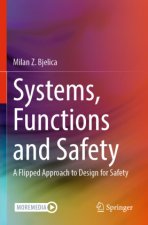
Systems, Functions and Safety
54.30 € -4 % -
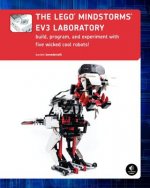
Lego Mindstorms Ev3 Laboratory
28.63 € -21 % -

Signal and Power Integrity - Simplified
133.06 € -

Lego Mindstorms Ev3 Discovery Book
29.04 € -19 % -
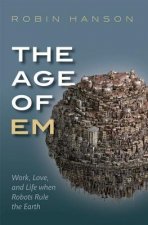
Age of Em
12.26 € -29 % -
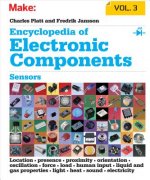
Encyclopedia of Electronic Components V3
23.62 € -24 % -

The Art of Electronics
101.66 € -2 % -

The Art of Electronics: The x Chapters
66.27 € -7 % -
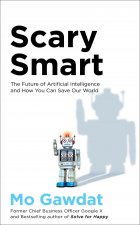
Scary Smart
24.23 € -

Complete Electronics Self-Teaching Guide with Projects
27.91 € -27 % -

Robot Builder's Bonanza
30.16 € -16 % -

MicroPython for Microcontrollers
33.23 € -9 % -

Foundations of Analog and Digital Electronic Circuits
114.85 € -

Understanding Cryptography
51.34 € -

Prüfungsvorbereitung aktuell - Elektroniker/-in Energie- und Gebäudetechnik
24.03 € -

SPS Theorie und Praxis
34.97 € -

LOGO!
30.06 € -

Homemade Lightning: Creative Experiments in Electricity
25.66 € -15 % -

Electrical Characteristics of Transmission Lines
116.18 € -

Lego Power Functions Idea Book, Volume 1
20.34 € -22 % -

The LEGO Power Functions Idea Book, Vol. 2
20.34 € -22 % -

How to Diagnose and Fix Everything Electronic, Second Edition
24.03 € -17 % -

Automotive Oscilloscopes
54.20 € -4 % -

Electronics For Dummies, UK Edition
29.14 € -5 % -
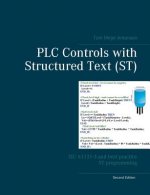
PLC Controls with Structured Text (ST)
29.86 € -8 % -

How to Diagnose and Repair Automotive Electrical Systems
21.67 € -30 % -

LOGO! 8 - A Practical Introduction, with Circuit Solutions and Example Programs
28.94 € -10 % -

3,000 Solved Problems in Electrical Circuits
39.37 € -21 % -
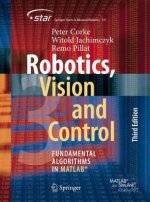
Robotics, Vision and Control
67.70 € -13 % -

Lego Technic Idea Book: Simple Machines
21.16 € -1 % -
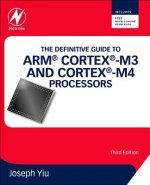
Definitive Guide to ARM (R) Cortex (R)-M3 and Cortex (R)-M4 Processors
68.62 € -4 % -

Design of Analog CMOS Integrated Circuits
75.88 € -1 % -

Audiophile Vacuum Tube Amplifiers - Design, Construction, Testing, Repairing & Upgrading, Volume 1
69.03 € -2 % -
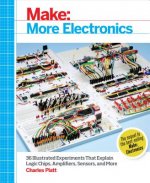
Make: More Electronics
27.50 € -24 % -

C Programming on Raspberry Pi
35.07 € -10 % -

Audiophile Vacuum Tube Amplifiers Volume 3
69.03 € -2 % -

Audiophile Vacuum Tube Amplifiers - Design, Construction, Testing, Repairing & Upgrading, Volume 2
69.03 € -2 % -

Manga Guide To Microprocessors
22.59 € -14 % -

Probabilistic Robotics
111.27 € -17 % -

Arduino Cookbook
47.86 € -16 % -

Motors for Makers
29.65 € -20 % -

Automating with SIMATIC S7-1500
136.85 € -
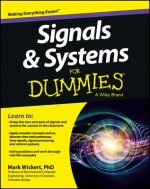
Signals & Systems For Dummies
18.61 € -29 % -

Transformers for Tube Amplifiers
102.58 € -
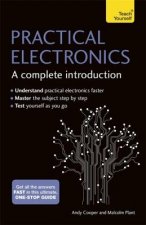
Practical Electronics: A Complete Introduction
16.87 € -27 %
Osobný odber Bratislava a 2642 dalších
Copyright ©2008-24 najlacnejsie-knihy.sk Všetky práva vyhradenéSúkromieCookies



 21 miliónov titulov
21 miliónov titulov Vrátenie do mesiaca
Vrátenie do mesiaca 02/210 210 99 (8-15.30h)
02/210 210 99 (8-15.30h)